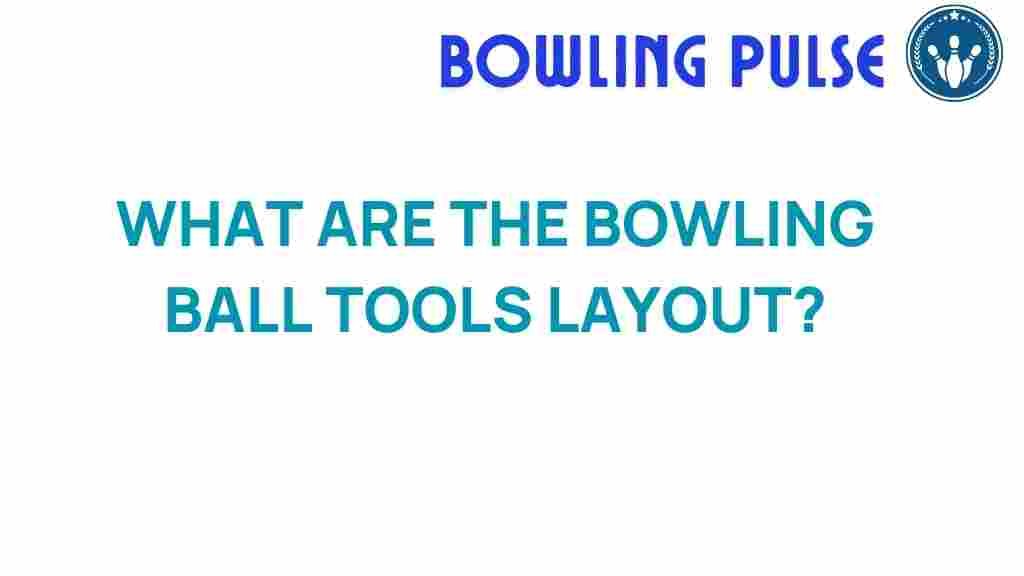Unlocking the Secrets of Bowling Ball Layout
Bowling is a sport that combines skill, precision, and a deep understanding of the science behind the equipment used. One of the most crucial aspects that can greatly influence a bowler’s performance is the bowling ball layout. This article delves into the intricacies of bowling ball layout, the essential bowling tools needed, and techniques for optimal performance. Whether you are a novice bowler or a seasoned pro, understanding the layout of your bowling ball can lead to significant improvements in your game.
Understanding Bowling Ball Layout
The bowling ball layout refers to the specific placement of the holes drilled into the bowling ball and the positioning of the weight blocks inside the ball. This layout directly impacts how the ball behaves on the lane, affecting its hook, roll, and overall trajectory. A well-thought-out layout enhances a bowler’s ability to control the ball’s movement, leading to better strikes and higher scores.
The Science Behind Bowling Ball Layout
When considering the bowling science involved, it’s essential to recognize the following factors:
- Core Design: The shape and density of the core determine how the ball will react upon release.
- Coverstock Material: The outer layer affects friction and how the ball interacts with the lane surface.
- Drilling Angles: The angles at which the holes are drilled influence the ball’s roll and hook potential.
Understanding these components allows bowlers to customize their balls to fit their unique style and preferences, enhancing their overall performance.
The Essential Bowling Tools for Layout
To effectively manipulate your bowling ball layout, you need the right bowling tools and equipment. Here’s a list of essential items for every bowler:
- Drilling Templates: These guides help bowlers visualize and plan their layouts before drilling.
- Bowling Ball Scale: For accurate weight measurements, ensuring the ball meets regulations.
- Drill Bits: Specific sizes are needed for creating holes that suit individual hand sizes.
- Bowling Ball Spinner: For resurfacing and maintaining the ball’s coverstock.
- Bowling Ball Cleaner: Essential for keeping the surface clean and maintaining grip.
Step-by-Step Process for Customizing Your Bowling Ball Layout
Customizing your bowling ball layout involves a systematic approach. Follow these steps for creating a layout tailored to your style:
Step 1: Assess Your Bowling Style
Before diving into the layout process, evaluate your bowling style:
- Speed: Faster bowlers may require different layouts than slower bowlers.
- Rev Rate: Bowlers with a higher rev rate might benefit from a layout that encourages a smoother transition on the lane.
- Targeting: Consider where you typically aim on the lane and how the ball reacts to that targeting.
Step 2: Choose Your Core and Coverstock
Based on your assessment, select a bowling ball with a core and coverstock that aligns with your needs. Consult with a professional at your local pro shop for recommendations.
Step 3: Determine the Layout Angle
The layout angle is vital for determining how the ball hooks. Common layouts include:
- Label Leverage: Provides a strong hook for bowlers with a high rev rate.
- Pin Up Layout: Enhances backend reaction, ideal for medium to high speeds.
- Pin Down Layout: Offers more control, suitable for slower speeds.
Step 4: Drill the Ball
Once you’ve determined the layout, it’s time to drill the ball. Ensure that the holes are drilled to fit your fingers comfortably. A professional driller can help achieve the perfect fit for optimal performance.
Step 5: Test and Adjust
After drilling, take your ball for a test roll. Pay attention to how it reacts on the lane and make notes:
- Does it hook too much or not enough?
- Is the ball rolling smoothly?
If necessary, adjustments can be made to the layout or surface of the ball to better suit your needs.
Troubleshooting Common Layout Issues
Even with the best intentions, sometimes the layout does not perform as expected. Here are some troubleshooting tips:
- Ball Hooks Too Much: Consider changing to a pin down layout or adjusting the surface to reduce friction.
- Ball Does Not Hook: Try a pin up layout or ensure that the ball is not too smooth on the surface.
- Inconsistent Roll: Reassess your grip and the finger hole sizes; you may need to adjust them for a better fit.
Additionally, if you find persistent issues, consulting a professional bowling coach can provide personalized insights and adjustments to enhance your game.
Conclusion
In conclusion, mastering the art of bowling ball layout is essential for any bowler looking to improve their game. By understanding the science behind bowling, utilizing the right bowling tools, and customizing your equipment, you can enhance your performance and take your skills to the next level. Remember that bowling is not just about throwing the ball; it’s about precision, technique, and the right setup.
For more detailed guidance on improving your bowling skills, check out our comprehensive resources on bowling techniques.
Whether you’re looking to strike, spare, or just enjoy the game, the proper layout and tools will help you unlock your full potential on the lanes. Happy bowling!
This article is in the category Equipment and created by BowlingPulse Team
